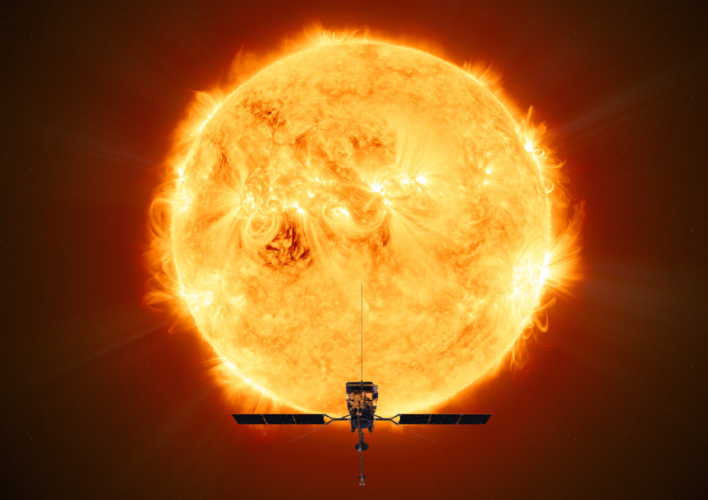
Launched on 10th February aboard an Atlas V 411 rocket, the Solar Orbiter mission will provide the first views of the Sun’s uncharted polar regions, which scientists believe are key to understanding the activity of the star. It will also investigate how intense radiation and energetic particles being blasted out from the Sun and carried by the solar wind through the Solar System impact our home planet, to better understand and predict periods of stormy ‘space weather’.
NASA's Parker probe heads for the sun
James Webb telescope layers up for the sun
The satellite at the heart of the project, built in the UK by prime contractor Airbus Defence and Space, will take just under two years to reach its initial operational orbit, making use of gravity-assist flybys of Earth and Venus to enter a highly elliptical orbit around the Sun.
At its closest, Solar Orbiter will face the Sun from within the orbit of Mercury, approximately 42 million kilometres from the solar surface where it will have to endure temperatures exceeding 500°C, hot enough to melt lead. The spacecraft’s payload of cutting edge scientific instruments will be protected by a heatshield covered in a special heat-emitting coating called SolarBlack.
“After some twenty years since inception…we have established new high-temperature technologies and completed the challenge of building a spacecraft that is ready to face the Sun and study it up close,” said César García Marirrodriga, ESA’s Solar Orbiter project manager.
The spacecraft will use a combination of 10 in situ and remote-sensing instruments to observe the turbulent solar surface, the Sun’s hot outer atmosphere and changes in the solar wind.
Remote-sensing payloads will perform high-resolution imaging of the Sun's atmosphere – the corona – as well as the solar disc. In situ instruments will measure the solar wind and the solar magnetic field in the vicinity of the orbiter.
Solar Orbiter will be one of two complementary spacecraft studying the Sun at close proximity: it will join NASA’s Parker Solar Probe, which is already engaged in its mission.
Commenting on the launch, Ian Walters, Airbus’ programme manager for Solar Orbiter said: “Today’s launch is a fantastic success for all the teams across Europe and America who have made this mission happen. We now look forward to the exciting discoveries that Solar Orbiter will make as it looks directly at the Sun.”




Poll: Should the UK’s railways be renationalised?
Rail passenger numbers declined from 1.27 million in 1946 to 735,000 in 1994 a fall of 42% over 49 years. In 2019 the last pre-Covid year the number...